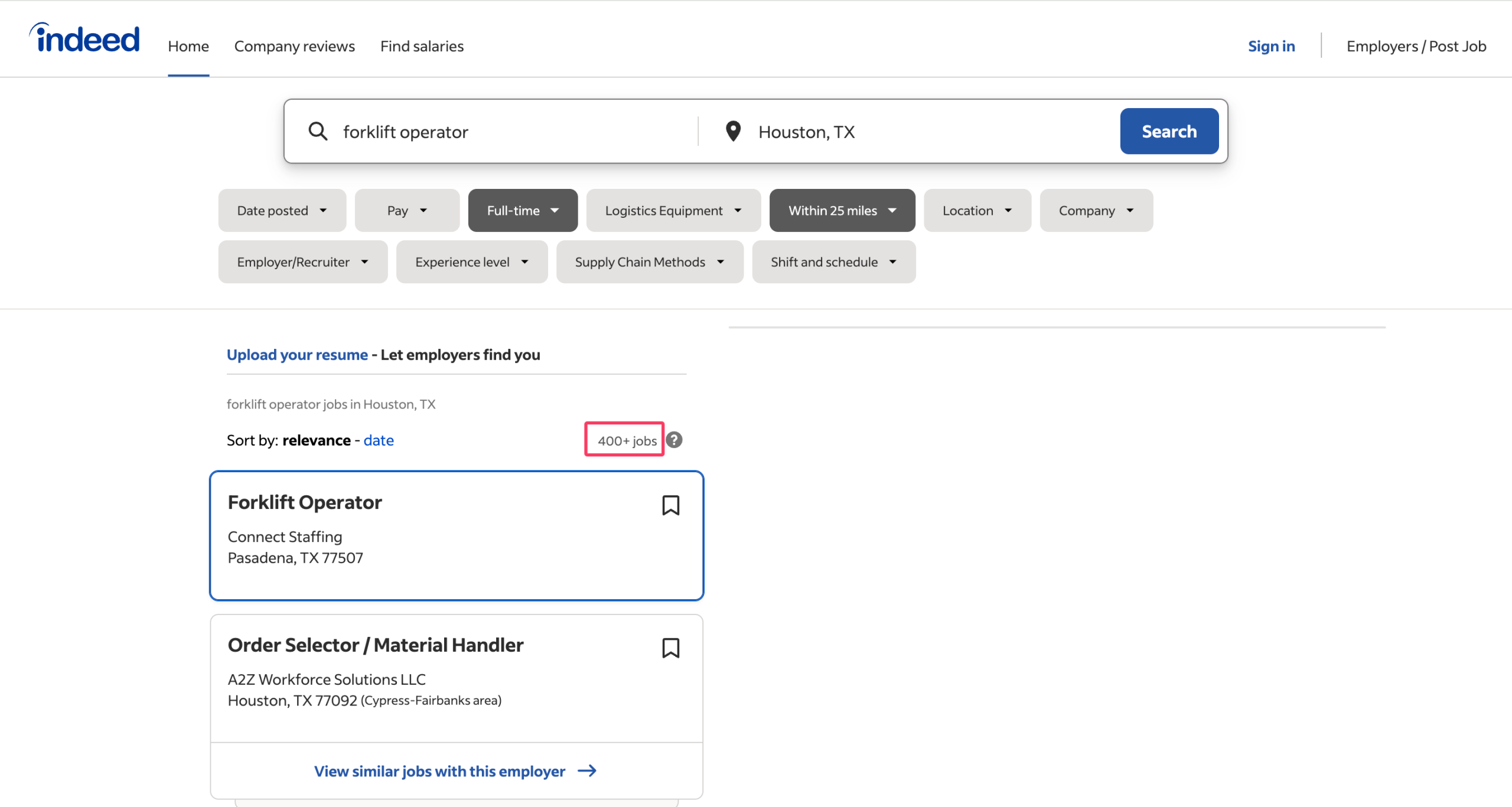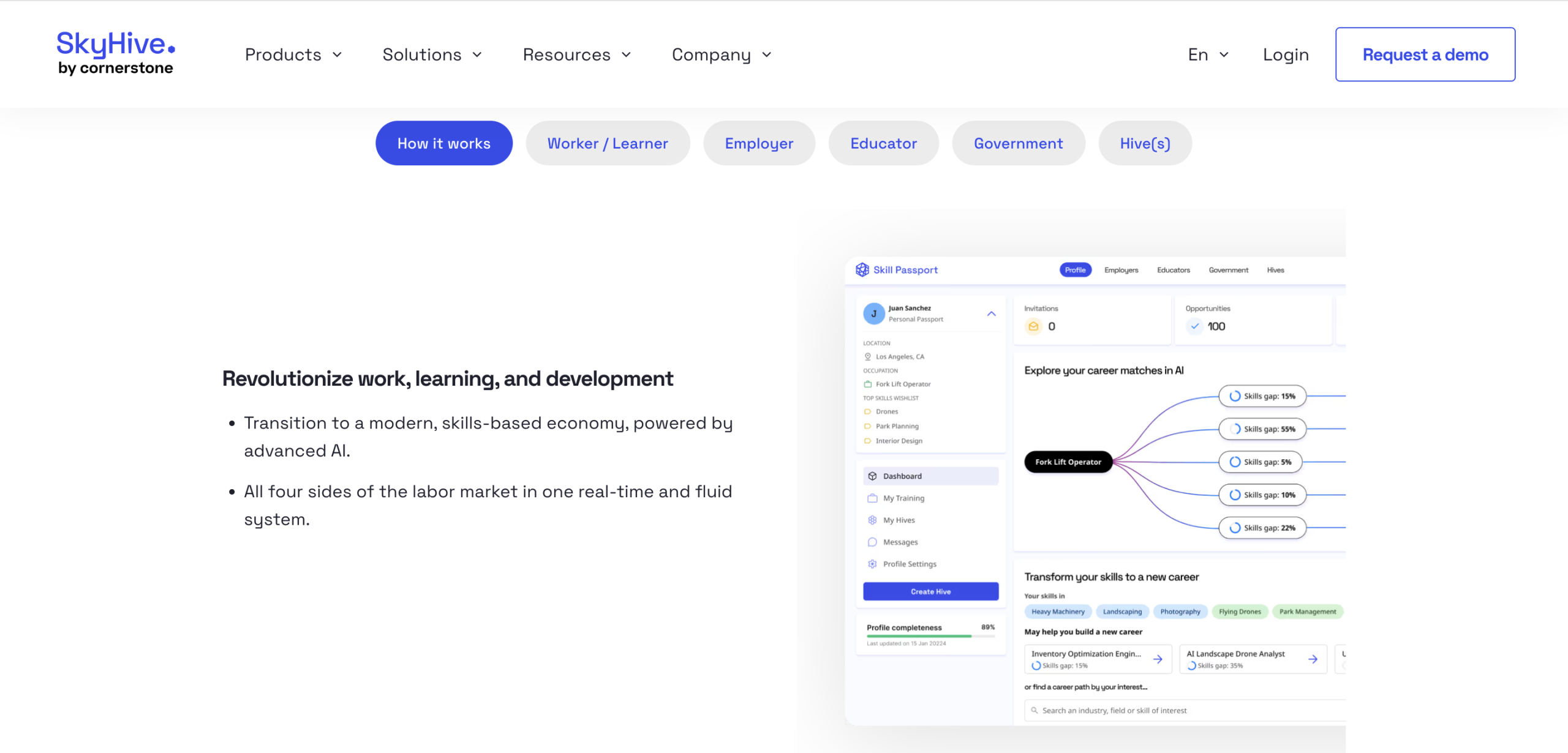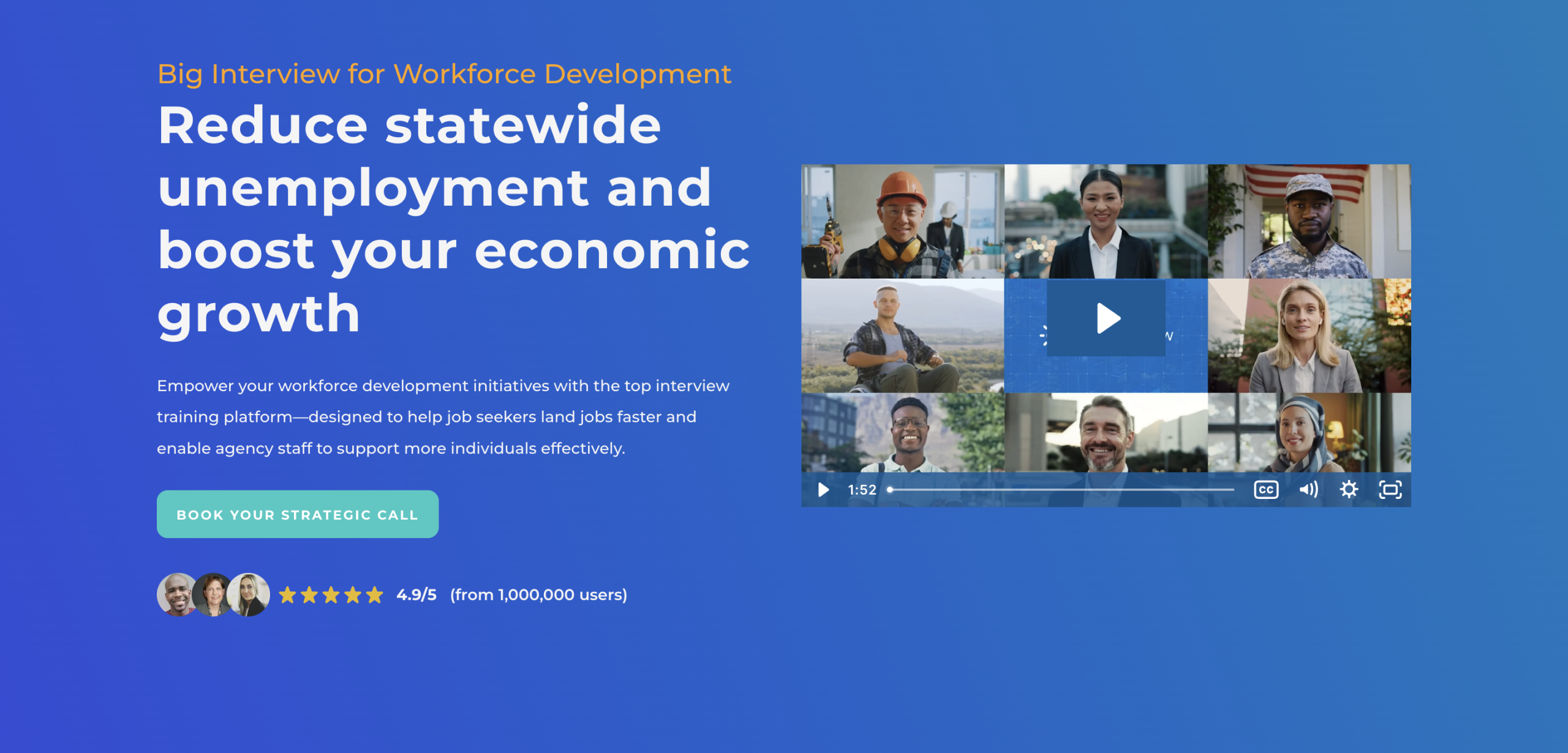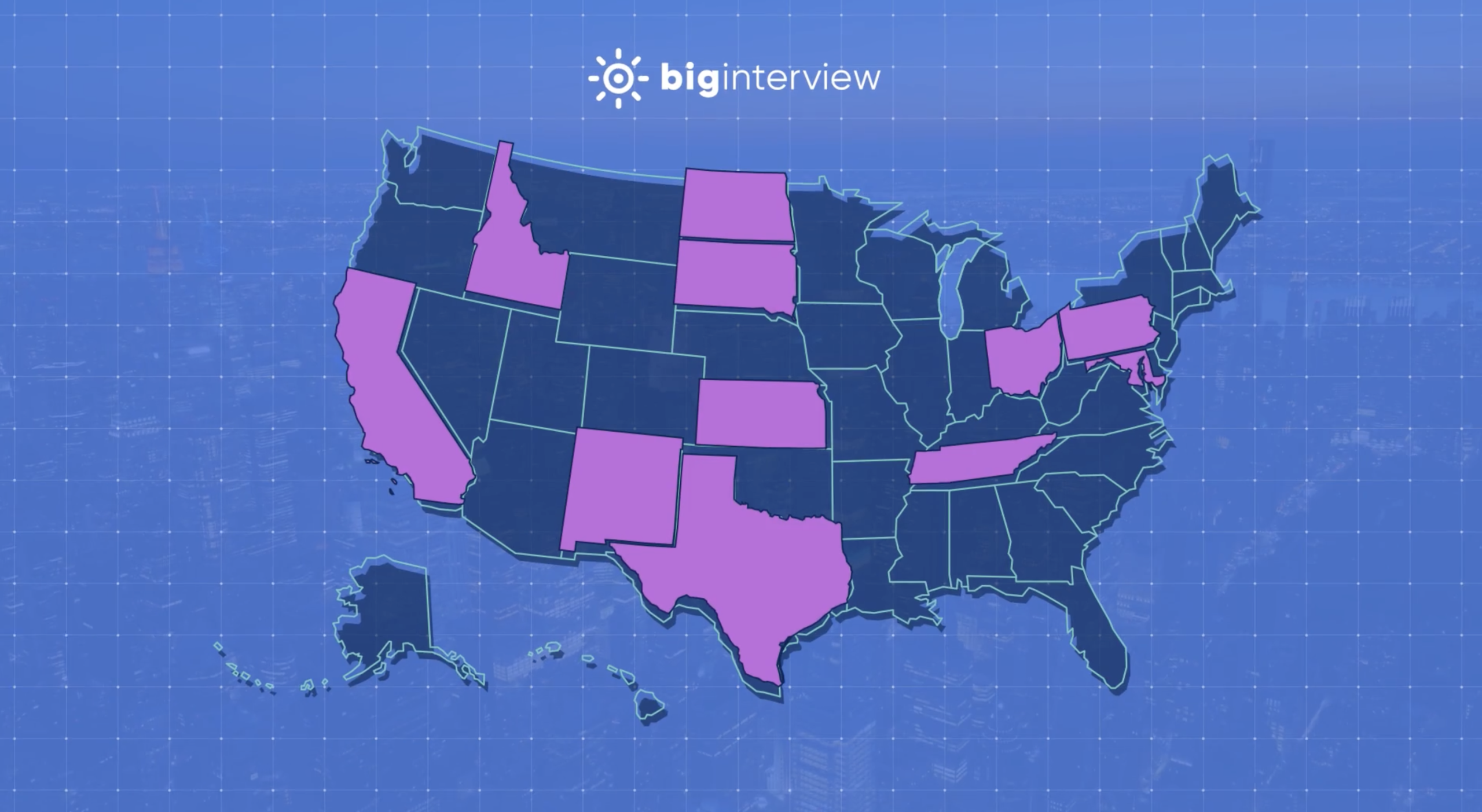Let’s face it: AI is disrupting the job market, and it’s scary. In fact, it’s scarier than most people are willing to admit.
Mass layoffs are flooding your systems, and traditional reemployment programs are struggling. But, strangely enough, the same tech might be your lifeline.
Innovations like AI-driven coaching, virtual job simulations, and automated skill assessments are reshaping the road back to work. Early signs suggest shorter unemployment, better job matches, and more scalable support for your teams and workers. The robots might have broken the system, but they could also be your best fix.
Let’s Talk About the Problem
AI-driven job disruptions threaten millions of U.S. workers:
- By 2030, 14% of workers must switch jobs due to AI and automation (McKinsey).
- 80% of the workforce faces task upheaval from large language models like ChatGPT.
- The threat spares no one: beyond white-collar roles and software engineers, entry-level workers and new grads are prime targets for displacement.
Reemployment programs were designed for a pre-AI world — and while they’ve helped many job seekers over the years, they’re now struggling to keep pace with a labor market that’s evolving faster than ever.
It’s not for lack of effort.
Teams inside unemployment offices are doing everything they can with the tools they’ve been given. But many of those systems were built for a different era — and they simply weren’t designed to support the speed, specialization, and scale that today’s job market demands.
The Paradox: AI and VR Can Help Get People Back to Work
Why “paradox?”
Because the same AI and VR tech that’s shaking up the job market might just be the exact reboot reemployment programs need.
AI for Faster Skills Verification and Smarter Training
Forget paperwork and endless waits at reemployment centers.
Picture this: A candidate walks in, grabs a tablet, and takes a fast skill test—in their language, their pace. Boom: 30 minutes later, their top skills are locked in, and a training path fits the local job scene.
This isn’t sci-fi. It’s now.
AI tools are already used in recruitment, testing technical, cognitive, and soft skills with machine learning and analytics. Resumes? Interviews? Old news. This is real-world skill evaluation, done better.
Some things new AI tools can help with:
- Predict job performance — Tools like Vervoe let you place candidates in virtual tryouts and watch them work and troubleshoot.
- Analyze soft skills — Arctic Shores uses behavioral science and machine learning to evaluate traits like curiosity, resilience, and focus.
- Adaptive testing — Tests which can adapt to a candidate’s answers in real time, making the assessment experience feel more like a conversation than a standardized test. For example, if someone gets a question right, the next one becomes harder; if they struggle, it adjusts and retests foundational skills. One such tool, Harver, combines behavioral science and AI to create gamified, adaptive assessments.
As workforce counselors, you can identify skill gaps with better precision and avoid “blanket retraining” and instead recommend only what’s necessary.
Some AI tools also issue micro-credentials and skill badges when a learner demonstrates competency. This is powerful for job seekers who don’t have formal degrees or who built their experience through informal or non-linear work paths. Think gig workers, immigrants, or those returning to the workforce after a long break.
What this means for RESEA programs:
State reemployment systems can integrate AI assessments into the intake process, not to replace caseworkers, but to equip them with more useful data from the start.
Within the first appointment, job seekers could:
- Know their strongest transferable skills
- See which jobs they’re already qualified for
- Get a clear path to the next level with just-in-time training
AI-Powered Job Matching
Once you know someone’s skills, the next step is finding the right job or at least pointing them in the right direction.
Most job seekers today still use online job boards like Indeed, Monster, CareerBuilder or Snagajob. These websites combine job titles, locations, and keyword-based searches — which typically yields too many irrelevant or low-quality results.

AI flips that model on its head by matching people to jobs, not the other way around. It helps one go beyond search bars and into prediction. Instead of having the job seeker endlessly search, they see where they would fit based on their profile, market trends, and skills.

In a nutshell, systems like SkyHive or FutureFit AI:
- Analyze thousands of job descriptions and resumes to understand which skills are in highest demand.
- Map job seekers’ profiles against real-time labor market needs.
- Recommend job matches and identify skill gaps.
AI for Personalized Interview Coaching
Another set of tools is proving incredibly useful, both to job seekers and state agencies looking to improve workforce development and increase job placement ratios.
AI-enabled resume builders and interview simulation tools can help close gaps and improve preparedness for interviews.
How it works:
- Resume optimization — AI scans a resume and compares it to an actual job posting to suggest better keywords, formatting, and content improvements that pass Applicant Tracking Systems (ATS).
- Job match alignment — The tool can tailor resumes and cover letters for specific roles, showing a user exactly where their experience aligns or falls short.
- Mock interviews — AI-powered simulations mimic real interview questions (behavioral and role-specific) and let users record their responses.
- Feedback engine — After each mock interview, AI offers detailed feedback on 15+ categories like communication, clarity, tone, filler words, and body language — helping candidates improve with each try.
- Progress tracking — It’s easy to track improvements over time and focus on the areas that need the most practice.
Big Interview uses generative AI to guide job seekers through resume writing, interview prep, and dynamic mock interviews, simulating real employer expectations. It’s designed to help candidates build confidence and improve their chances of landing a job — by providing personalized, data-driven support.
Its AI-powered video interview simulations come with automated analysis of candidate responses. AI checks body language, tone, language, and content to assess communication, emotional intelligence, and fit.
Tools like this one are primarily used for interview training, but are valuable for customer service, sales, and all remote corporate roles.

What this means for RESEA programs:
Imagine this flow in a workforce program — A person gets laid off and files for unemployment. During intake, they complete a skills profile and AI assessment.
The system matches them with several open roles in their area and highlights a short course they could complete in a week to become a top candidate. They use a virtual interview coach to practice responses tailored to that specific role.
They apply with a targeted resume built from AI suggestions and walk into the real interview more confident and qualified.
A clear example of this in action comes from Maryland’s RESEA program.
When job seekers attend reemployment workshops, they’re introduced to Big Interview as part of a structured reemployment plan, including resume-building support and personalized, AI-powered mock interview practice.
This approach helps them gain confidence, sharpen their skills, and get hired faster.
The result:
- 12,000–13,000 Maryland residents served annually
- Job seekers secured employment 4–5 weeks faster than the national average
- 2–3 fewer interviews were needed per hire
Virtual Reality for Safer, Smarter Training
Not everyone learns best in a classroom. And some jobs can’t be practiced safely in real life until someone is fully trained.
In fields like commercial driving, manufacturing, and healthcare, VR-based job simulations are already letting learners practice in realistic, low-risk environments. Tools like Transfr, Interplay Learning, Strivr, Pixo, or Cornerstone provide muscle memory, build confidence, and create opportunities for real-time feedback, all without putting lives or equipment at risk.
Even for entry-level retail or hospitality roles, VR can help candidates experience a “day in the life” and decide if a career path is right for them before they commit to training.
Imagine a job seeker practicing how to operate a forklift in a warehouse or greeting a customer at a hotel front desk before they’ve even landed the job.
What this means for RESEA programs:
- Faster skills acquisition, especially in technical roles where muscle memory and quick decisions matter.
- Improved job retention, because candidates can self-select into careers after trying them on virtually.
- VR also levels the playing field. People who struggle with reading-heavy content or lack formal education often shine in simulated environments where they can show (not just explain) what they can do.
Integrating Technology Into Workforce Programs
Rather than replacing human advisors, digital tools can extend their reach. Hybrid programs, where job seekers complete skill assessments, finish training, or get resume help online, and then check in with a human coach, have shown strong potential. This is a game-changer for rural or underserved populations who struggle to make it into a physical office.
But for hybrid delivery to truly scale, the workforce behind the workforce has to be equipped and supported.
That starts with hands-on training for career counselors, caseworkers, and admin teams, not just in using the new tools, but in coaching others to use them effectively.
This training should enable your team to:
- Onboard clients to AI-powered platforms
- Interpret data dashboards
- Spot when a job seeker is getting stuck digitally and intervene
- Personalize support even when some of the “front-end” work is automated
Agencies should partner with workforce tech vendors that offer structured onboarding and “train-the-trainer” programs. The goal isn’t to hire more staff, but equip the team you already have to drive greater impact with the right tools.
By investing in deep, hands-on training, your staff can confidently support job seekers and train others — multiplying your reach without expanding your team.
When evaluating vendors, look for:
- Dedicated onboarding and training support (not just one-time demos)
- Clear product documentation and self-serve learning materials
- Real-world use cases tailored to your agency’s needs
- Responsive customer support
- Tools that allow for easy internal rollout (admin controls, customizable content, multilingual support)
Implications for Workforce Development Teams
Bottom line: Integrating AI and VR into your programs should make your work easier and more meaningful.
When implemented well, these technologies help job seekers move forward weeks (sometimes even months) faster and free up your staff to do what they do best.
Think of it as a division of labor:
- AI handles the repetitive, data-heavy tasks — resume formatting, tailoring applications to job descriptions, or delivering immediate feedback on mock interviews.
- VR simulates real-world training environments — job seekers practice customer interactions, safety procedures, or communication skills in a way that simulates real-life and is accessible and repeatable.
- Career coaches focus on high-touch work — you help people build confidence, decide on job offers, or career paths.
What does this impact look like in practice?
States like Maryland, South Dakota, Tennessee, North Dakota, Idaho, and New Mexico are already seeing the benefits of integrating Big Interview’s AI into their reemployment programs.
Even modest implementation has led to measurable results — including shortening unemployment durations by 4–5 weeks.
With over 1 million users worldwide, our platform is proven to help job seekers find employment 5x faster than the national average. Specialized support is available for veterans, returning citizens, neurodiverse individuals, and job seekers with disabilities.
By automating mock interviews and providing expert-reviewed feedback, we help reduce the administrative load on caseworkers — freeing up time for more personalized guidance. And because our tools are fully virtual and accessible statewide, even rural communities can benefit from high-quality support.

This is what workforce development should be for everyone — people-first, tech-enabled, and outcome-focused.
A Blueprint for What Comes Next
To get ready, start by analyzing your current process and systems:
- Track how much staff time is spent on repetitive support tasks like resumes or mock interviews.
- Survey job seekers to understand what support they find meaningful (and what they don’t).
- Evaluate AI tools, considering things like usability, integration with your existing systems, data privacy, and how well they match your needs.
- Provide digital training for counselors, especially around AI and self-service tools.
- Pilot hybrid models that combine tech-driven prep with human coaching.
- Document and share your results to scale what works.
AI is here to stay. With a relatively small investment, agencies can free up valuable staff time, deliver more personalized support, and help job seekers get back to work faster. Now’s the time to explore what’s possible.
